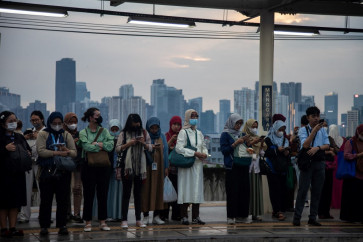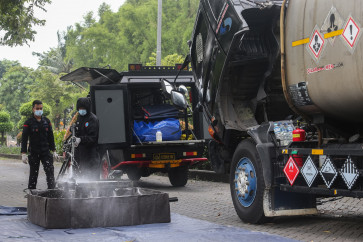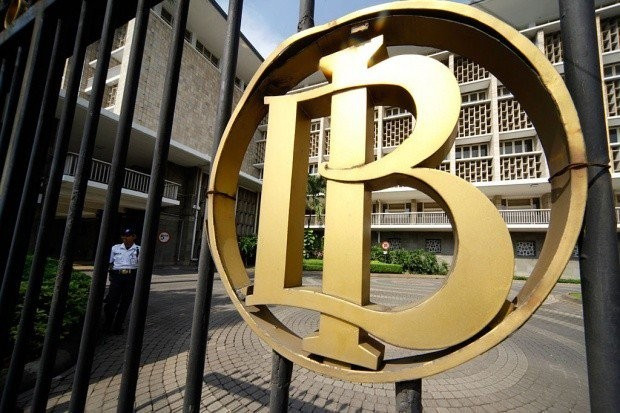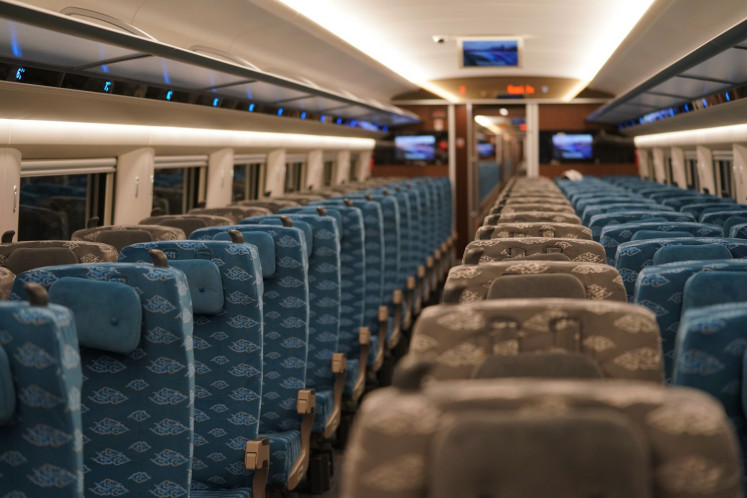Popular Reads
Top Results
Can't find what you're looking for?
View all search resultsPopular Reads
Top Results
Can't find what you're looking for?
View all search resultsFrom out of the jungle
Deserted: Two rusting amphibious tanks from World War II sit amid coconut plantations near Daruba, Morotai’s capital
Change text size
Gift Premium Articles
to Anyone
D
span class="caption">Deserted: Two rusting amphibious tanks from World War II sit amid coconut plantations near Daruba, Morotai’s capital. This tank had bullet holes on one side from a long ago battle.
After General Douglas MacArthur determined to make Morotai a base to attack the Japanese in the Pacific during World War II, approximately 50,000 Allied troops made the swelteringly beautiful island their home. Japanese soldiers numbered about 500, Morotai’s before the arrival of combatants: 9,000.
Today, Morotai’s population approximates the number of soldiers stationed there during the war. According to the Central Statistics Agency, there were 52,000 residents in 2010.
After WWII ended with the Japanese surrender on Aug. 15, 1945, not all soldiers returned home, including Teruo Nakamura, a conscript in the Imperial Japanese Army. Months earlier the private had
fled into the jungle with other soldiers, never learning of the Japanese surrender.
Actually a native of Taiwan, Nakamura reportedly left the group of holdouts in the 1950s to live in isolation in a valley adjacent to the hills of Pilowo in south Morotai. He was discovered at the end of 1974, becoming the last Imperial Army solder from WWII to surrender.
In Dehegila village, a monument to Nakamura stands at a quiet crossroads. Abdullah lives right there, a farmer of cloves and coconuts. He says his father, Gonaga, now 80 and unable to communicate, once came upon Nakamura in the jungle while he was hunting pigs.
“[Nakamura] was naked except for Japanese-style wrap underwear,” he said of his father’s account. They spoke in Gonaga’s limited Japanese.
The site where Nakamura lived in a homemade shelter and cultivated bananas for more than 20 years
lies beyond a dusty transmigration village called SP2 and a large field that Abdullah explained had been the site of a Japanese army encampment.
“One thousand villagers from nearby Kotalamo cleared the land for the Japanese. They were killed when the work was completed,” he told The Jakarta Post.
These sites have no monuments, no plaques, no indication of their grim, tangled past except for the Japanese helmets and weapons Abdullah said used to regularly be found in the area.
Traveling north from Dehegila and nearby Daruba, other remnants of the war linger. Two amphibious tanks stand rusting amid coconut plantations a short, steaming hike from the main road. One tank has a smattering of bullet holes on one side; the other bears graffiti that says simply “I Love You”.
— JP/Deanna Ramsay










